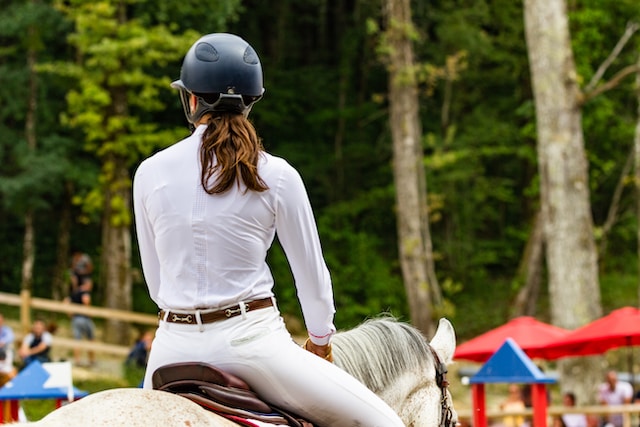
How to Set Up a Safe and Effective Horse Jumping Course
Jumping requires an exact and coordinated ride. Whether you are just starting or an experienced rider, learning to walk a course effectively takes practice.
The type and order of the obstacles will also affect how the distances between them ride. For example, oxers tend to ride slightly further than verticals.
Plan the Course
A show jumping course, like in kids horse jumps, comprises fences stacked together in “combinations.” As riders and horses advance through levels, they may encounter more complex combinations. These might contain oxers and verticals in a close row with only one or two strides between them.
The oxers in these combinations are often shaped as a “V” designed to encourage the horse to tuck its legs around. Conversely, the verticals have a more acute bascule shape that requires a more advanced riding position.
To clear a combination, it’s essential to help your horse find the proper distance by riding in a half seat and using soft hands to let them figure out the height of each jump before they approach it. This will prevent the horse from kicking up its heels and wasting time attempting to clear the fence too early.
Design the Fences
Having a plan for each fence and track is essential, but it’s important to consider what happens between the jumps. Many riders get so focused on jumping that they need to remember to set the horses up for success in between.
For example, a solid corner fence is hard to ride for horses not used to this type of obstacle. It requires precision to keep the horse straight and not run out or catch a leg.
Skinny obstacles are also tricky for horses to jump, particularly at higher levels. They require a precise canter and a steady balance to clear them. The obstacle’s height also affects the distance of the take-off and landing. This affects how the combination rides and how much room for error is available.
Set Up the Poles
Remember that not all jumps can be set up equally when building a course for your horse. Having some more challenging than others can help your horse grow more robust and better at jumping.
For example, a square oxer (two top poles placed evenly at the same height) requires a rider to take up a large stride to clear the obstacle. The rider must compress to go deep over the oxer at Jump A, then add power to stretch over the longer distance between Jump B and Jump C to clear this tricky combination.
This setup also helps the rider practice timing by asking for a short collected trot step between each oxer and a long lengthened stride when they canter over the vertical.
Measure the Distances Between Fences
Whether you are a DIY fence builder or using a professional fence installer, the proper distance between the poles is crucial to the strength and design of your fence. It is also critical to avoid wasting materials.
For beginners, a simple way to measure the distance between fences is by taking three 3-foot steps. This will give you a quick and easy way to determine if the line you have drawn is within two strides of your horse’s normal striding or if it is one step off (horse show stride or add stride).
Remember that as your horse develops, you may need to lengthen these related distances, but it is an excellent place to start. This will help to prevent horses from running into or getting caught in your fences.
Create a Course Diagram
As horses and riders advance through show jumping levels, they often encounter jumps stacked closely together in a “combination.” This type, of course, is more challenging for the horse because it requires them to have precise strides between each obstacle.
The most significant cause of getting left behind over fences is poor position. This can be corrected by riding regularly in the school or out of hacking. Some riders also use video to help them identify and fix their positioning problems.
One way to improve your position is to ride a series of canter cycles, starting from a light, balanced canter in the jumping position and then moving back to the regular seat. This will train you to stay central in the saddle while jumping and encourage you to fold your front end on landing.





